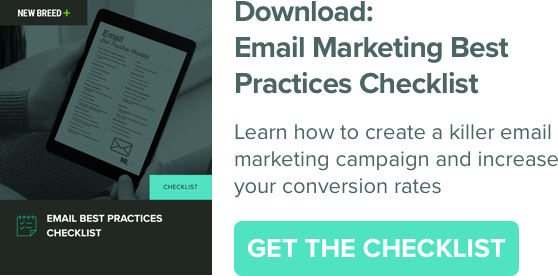3 Reasons Why Email Development Can Be a Headache

Have you ever opened an email to find a jumble of empty boxes and misaligned text? It's hard to create meaningful connections and boost customer engagement when your content isn't appearing as you intended. Though it's often overlooked, designing and developing email templates is no simple task. Developers must account for a wide range of email clientele that all abide by different CSS rules. If an email looks correct to one email client, you can almost guarantee that it won't appear the same way to others. To help quell your email development frustration, I've laid out the top three reasons why email development is so tough and a few simple tips for getting it right.
1. There Are a Lot of Moving Parts to Consider
When developing emails, there are a vast range of providers, devices, settings and clients to take into account. Developers must consider which email client a viewer may be leveraging (gmail.com, yahoo.com, outlook.com), whether they're accessing email through a third-party application (Apple Mail, Thunderbird) and the type of device they're using to view the email (desktop computer, tablet, mobile device). All of these viewing iterations are made even more complex by the fact that each email provider supports different CSS options!
2. There is No Magic Rule or Quick Fix
The hardest hurdle to traverse when it comes to email development is the fact that there's no single CSS comprehension rule that can be broadly applied across all email providers. For instance, background images work on everything except certain versions of Outlook, while padding only works on certain tags. Gmail excludes any styles that are not inline, which renders conventional CSS useless. The only way to juggle the CSS nuances of each provider is to test each email template you create before sending it out to your contact base.
3. Viewers Have Control Over Display Preferences
Most email providers give users the option of not automatically displaying email images. That means that, by default, any images in an email will show as an empty box with unstyled, alt-content messages inside — not very eye-catching or compelling. Unless you have a handful of friends with different mobile devices willing to give you some much-needed viewer feedback, it can be difficult to ensure that an email is appearing correctly across different mobile devices. Though media queries (code that adapts the layout of emails and web pages according to the width of the user's window or device) can help iron out formatting inconsistencies between mobile devices, they can also lead to unintended issues if a user is viewing a desktop version of an email on their mobile device.
Don't Panic. There's Help.
The permutations of errors that can occur when developing email templates can seem overwhelming, but that's no reason to freeze with fear. My best advice for creating email templates is to keep it simple. Although it may clash with creative coding credo, simplicity is the best way to ensure that an email will render correctly across the board and to guarantee that the content — the heart and hook of every email — can actually do its job.
If an offer does require something a little more complex, then make sure to test and retest your template for errors. Determine through trial and error which areas are not rendering correctly, make the appropriate corrections and then test again. When it comes to developing templates, haste usually ends up undercutting quality, so take your time to make sure you get it right.
If you're on a strict timeline or don't have the in-house capacity to troubleshoot an email template, another alternative is to purchase pre-made templates that offer some design flexibility. The best pre-developed email templates have been extensively tested and are fairly bulletproof with regard to code, while still remaining easy to manipulate at a surface level to meet your specific aesthetic and brand requirements.
New Breed offers a set of pre-designed, pre-developed and pre-tested email templates that can be accessed through your Hubspot portal. If you're interested in leveraging our email templates and saving yourself the hassle and time of internal development, feel free to reach out to us to learn more.





